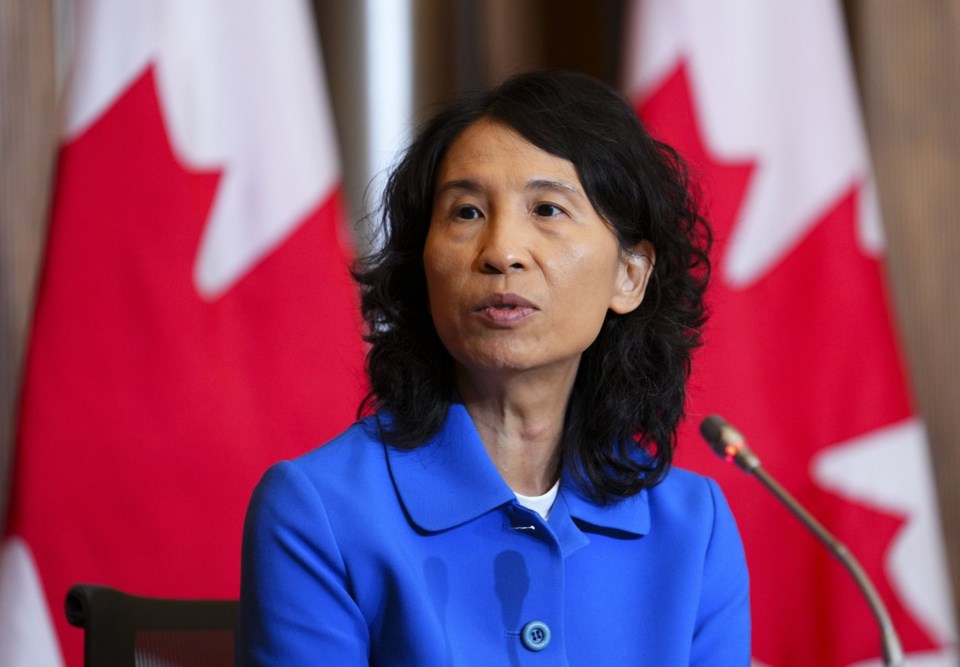TORONTO — As Dr. Theresa Tam prepares to leave her position next week, Canada's top doctor says it's more important than ever for Canada to stand up for science and combat disinformation.
She's held the role of chief public health officer for eight years, but became a household name in the last five years as she led the country’s public health response to the COVID-19 pandemic.
Her term ends June 20 and she doesn't have another job lined up, Tam said in a wide-ranging interview Friday that touched on her desire to be remembered for more than COVID, her passion for health equity and the musical side of her the public hasn't seen.
"A strategic bit of planning was to just take a bit of time to reflect so that I can consider the opportunities that are in front of me and see what excites me, but is purposeful," she said of what lies ahead.
"I do want to take a bit of time also with family and, you know, focus on them a bit more," Tam said.
Although she will "really miss everyone" at work, Tam said she was eager to pursue some hobbies that have fallen by the wayside due to her hectic schedule, including long-distance running and music.
"I am a musician and I haven't really focused on that very much," said Tam, noting that she plays the piano, violin, cello and trumpet.
"At some point in my career, I've dropped a whole bunch of them."
But she kept her musical background in the back of her mind during the pandemic.
"I translated a lot of my musical thinking into conducting an emergency. So I always think of myself as like a conductor of the orchestra and how to conduct that response."
While the pandemic killed more than 60,000 in Canada upended so many facets of everyday life, Tam hopes Canadians also remember it as a time that communities responded to public health mitigation measures — including a COVID-19 vaccine campaign — that prevented the toll from being much worse.
As Canadians remember the horrors of the pandemic, including more than 60,000 deaths, Tam hopes they also recall the successes — including the high percentage of people who rolled up their sleeves to be vaccinated — that prevented the toll from being much worse.
"If we didn't have communities doing what they did, we would not have had an outcome that's — relatively speaking when you compare to other, say, G7 countries — relatively good."
When asked about how the unrelenting pace of the pandemic, as well as attacks from people unhappy with public health measures affected her, Tam said her support systems, both at work and in her personal life, were helpful.
"Mentally, it was very stressful for everyone," she said.
But she said provincial and territorial public health officials and many other colleagues leaned on each other.
"There were Sunday conversations, which turned very technical, but at the same time, we wanted to use those opportunities to just share a cup of tea over the internet and say, 'Look, what's happening? How can we help each other?'"
Tam also credits family, friends and neighbours "who all provided supports when I felt that I'm so exhausted I can't go on."
"And then you have a nap and then you carry on," she said.
Tam doesn't want her legacy to be dominated by COVID-19. A pediatric infectious disease physician by training, she joined the federal government’s public health team as a field epidemiologist in 1998, eventually rising to the position of deputy chief public health officer and then to the top job in June 2017.
Although she's handled several public health crises — including severe acute respiratory syndrome (SARS) in 2003, H1N1 swine flu in 2009, mpox, measles and the threat of H5N1 avian flu — Tam said her passion has always been working toward health equity for all.
That includes working with racialized groups, people with low socioeconomic status and Indigenous people, as well as those dealing with complex societal challenges such as substance use and climate change that threaten people's health.
"My ambition (has been) to connect economic, social health and the environment. And that, I hope, is a nice sort of bookend to my career as the chief public health officer."
In 1998, the year Tam started working in federal public health, measles was declared eliminated in Canada. As she leaves, cases of the virus are on the rise.
"To see measles come back, of course, to me is concerning," she said.
"(But) I want to leave a hopeful message, which is: 'We've done it before and we can do it again,'" she said of stopping transmission of the virus within Canada.
But a big part of achieving that is combating disinformation and misinformation and building trust in vaccines and the research behind them.
"We do need to pay attention to youth and young adults. They are current and future parents," she said.
"They are mostly getting their information from social media and cyberspace. They're much more exposed to misinformation."
Tam said it’s a critical time for Canada to stand up for science and combat disinformation amid anti-public-health measures by U.S. President Donald Trump and Health and Human Services Secretary Robert F. Kennedy Jr. — measures that included cancelling National Institutes of Health research projects and replacing the Centers for Disease Control and Prevention vaccine advisory panel.
"We focus on our science-based approaches. We can play an even more important international role (in public health) under these circumstances."
This report by The Canadian Press was first published June 13, 2025.
Nicole Ireland, The Canadian Press



